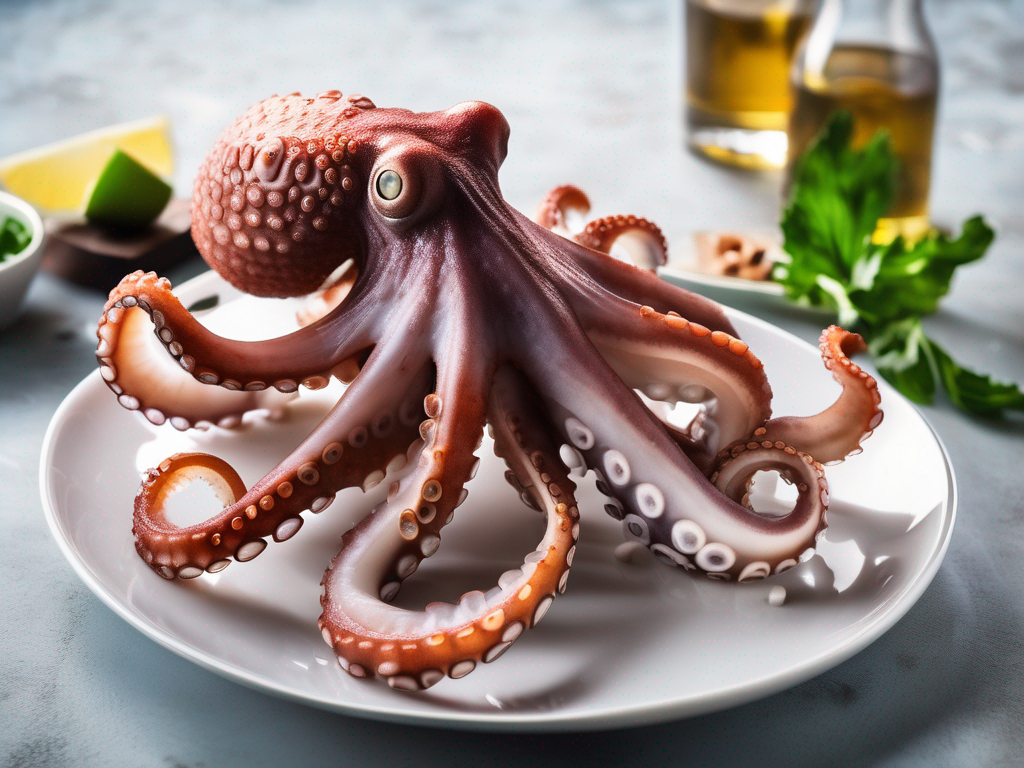
Is Your Octopus Fresh Raw Still Good? How to Tell If It Has Gone Bad
Get Your Free Food Safety Cheat Sheet
30 most common foods with instant answers. Print it and stick it on your fridge—completely free!
Is Your Octopus Fresh Raw Still Good? How to Tell If It Has Gone Bad
When it comes to cooking seafood like octopus, freshness is key. Eating spoiled octopus can lead to foodborne illnesses and ruin your meal. But how can you tell if your octopus is no longer fresh and safe to eat? In this guide, we'll explore the signs of spoiled raw octopus and provide you with practical tips on how to ensure your seafood is safe to consume. (Octopus fresh raw)
Understanding the Shelf Life of Octopus Fresh Raw
Octopus is a delicate seafood that can spoil quickly if not stored properly. Here are some key points to keep in mind about the shelf life of raw octopus:
Factors Affecting Freshness
- Temperature: Octopus should be stored at a temperature below 40°F (4°C) to prevent bacterial growth.
- Odor: Fresh octopus should have a mild, briny smell. Foul odors indicate spoilage.
- Texture: The flesh of fresh octopus should be firm and slightly elastic. Slimy or mushy textures are signs of spoilage.
- Color: Fresh octopus should have a vibrant, translucent appearance. Discoloration or dark spots can indicate spoilage.
Signs that Your Octopus Fresh Raw Has Gone Bad
It's essential to be able to recognize the signs of spoiled raw octopus to avoid foodborne illnesses. Here are some indicators that your octopus may have spoiled:
Visual Signs
- Discoloration: Look for any changes in color, such as a dull or darkened appearance.
- Sliminess: If the octopus feels slimy or sticky to the touch, it is likely spoiled.
- Visible Mold: Any presence of mold on the surface of the octopus is a clear sign of spoilage.
Smell
- Foul Odor: Spoiled octopus will emit a strong, unpleasant odor that is different from the natural briny scent of fresh seafood.
Texture
- Mushy Texture: Fresh octopus should be firm and slightly springy. If the flesh feels mushy or falls apart easily, it is no longer fresh.
Tips for Ensuring the Freshness of Octopus Fresh Raw
To ensure that your octopus remains fresh and safe to eat, follow these practical tips for proper storage and handling:
Storage Tips
- Refrigeration: Store raw octopus in the coldest part of your refrigerator, ideally below 40°F (4°C).
- Proper Packaging: Place the octopus in an airtight container or resealable bag to prevent cross-contamination.
- Use-by Date: Always check the use-by date on the packaging and consume the octopus before it expires.
Handling Tips
- Thawing: If using frozen octopus, thaw it in the refrigerator overnight rather than at room temperature to maintain freshness.
- Cooking: Cook octopus thoroughly to kill any bacteria and parasites that may be present.
- Leftovers: If you have leftover cooked octopus, store it in the refrigerator and consume it within 2-3 days.
Conclusion
Ensuring the freshness of your raw octopus is essential for both the taste of your dish and your health. By being mindful of the signs of spoilage, following proper storage and handling practices, and cooking octopus thoroughly, you can enjoy this delicious seafood safely. Remember, when in doubt, it's always best to err on the side of caution and discard any octopus that shows signs of spoilage. Enjoy your octopus fresh raw in your favorite recipes, knowing that it's safe and delicious! (Octopus fresh raw)
Authoritative Food Safety References
These agencies and university labs inform every tip and health precaution we publish.
USDA FoodKeeper – Cold Storage Guidelines
Official refrigerator, freezer, and pantry timelines maintained by the U.S. Department of Agriculture.
Visit USDA FoodKeeperFDA Produce Safety Rule & Grower Guidance
Field-to-fridge handling practices that prevent contamination of fruits, vegetables, and leafy greens.
Visit FDA Produce SafetyCDC Foodborne Illness Prevention Hub
Surveillance-backed guidance on pathogens, symptoms, and steps to reduce foodborne illness risk.
Visit CDC Food SafetyUC Davis Postharvest Technology Center
University research detailing optimal storage atmospheres for produce after harvest.
Visit UC Davis PostharvestPenn State Extension – Home Food Preservation & Safety
Peer-reviewed extension bulletins on safe canning, chilling, and reheating practices.
Visit Penn State ExtensionGet Your Free Food Safety Cheat Sheet
30 most common foods with instant answers. Print it and stick it on your fridge—completely free! Want more? Upgrade to the complete guide with 70+ foods.
Scan your food directly and get instant safety info using our AI-powered camera feature.